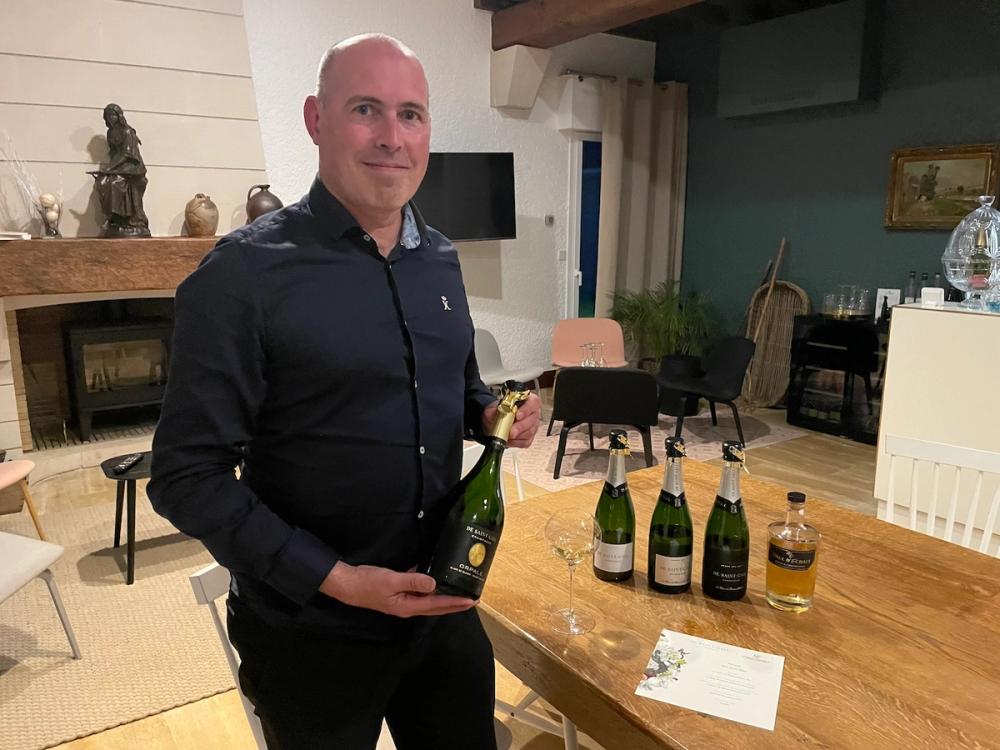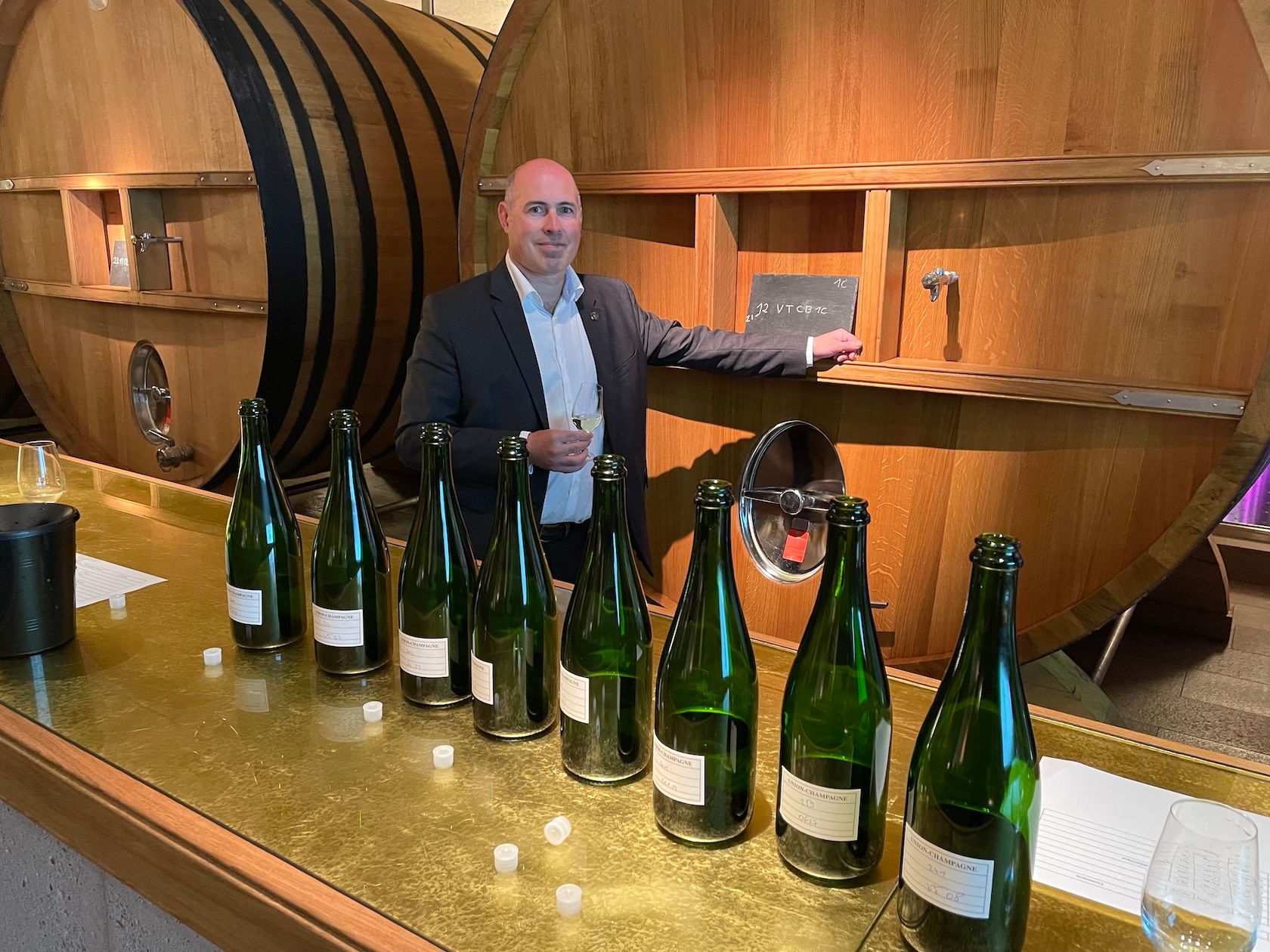It’s not quite clear how large Marie Sainte-Beuve’s parcel of vines is. She tells me it’s bigger than a tennis court but smaller than a football pitch. Still, there’s no doubt she is proud of the end product, the Sainte-Beuvre Chardonnay Grand Cru champagne of which just 700 bottles are made each year.
Sainte-Beuve, who runs a spacious B&B in Mareuil-sur-Aÿ, is typical of the 2,300 small growers in Champagne who take on the mighty grands maisons by joining forces in the Union Champagne cooperative. They have 1,400 hectares between them – virtually all grand crus or premier crus. The cooperative makes its own range of premium champagnes from their grapes under the de Saint-Gall and prestige cuvée Orpale brands.
Oddly, you may well have savoured some of Marie’s grapes. The cooperative, founded in 1964, has a long-standing private-label deal to supply UK supermarket Tesco (premier cru is £25 a bottle). Unusually, Union gets a name check on each bottle. And M&S has just started stocking de Saint-Gall Tradition (£28 a bottle) on its shelves again. More importantly, the big champagne producers buy up most of the Union cooperative’s harvest to put in their own wines.

Cellar master Cedric Jacopin
Over the two days we spent at Union, headquartered in Avize, we were taken on a tasting journey through its extensive range. At the central facility, there is an array not just of gleaming stainless steel tanks but also big oak barrels. The latter is to give some reserve wines more oxidation and texture - not to lend any taste of wood.
We also get insights into Union’s intriguing strategy.
The cooperative has very much a special niche in the ecology of champagne makers, enjoying a symbiotic relationship with the big marques who are both competitors and partners. Producing 1.2 million bottles a year, it wants to expand its sales under the de Saint-Gall and Orpale brands, especially in export markets such as the US and UK. But profit is only one motive for the direct sales. Possibly more significant is showing the big-name champagne houses the quality of Union’s finished wines so that they will buy more of its growers’ premier and grand crus base wines. That’s important since of its €150 million turnover, only €25 million comes from sales of its own finished wines.
There’s a further twist to the story. The Union cooperative could embark on a bold marketing offensive to establish itself as a challenger brand, in its own right. But it recognises that, if it ever started to ‘play rough’ with the large Houses, they would simply start buying up swathes of scarce land in Champagne for themselves. That would spell the end of the small growers and their distinctive way of life – not something that would make anyone look good.
Hence costs are kept low and marketing budgets are modest. What they don’t stint on is ageing. For example, Orpale is aged for a minimum of ten to 15 years – and, increasingly, longer. “The market for old vintages is a relatively new and we are now keeping back every vintage in larger quantities than in the past,” explains cellar master Cedric Jacopin. Quaffing a vintage from the same year as your wedding anniversary or birthday is now quite a thing.

The outfit’s biggest boast is its Chardonnay from some of the best plots in the region in the Côte des Blancs. This results in some delicious blanc de blancs from a non-vintage premier cru up to a grand cru millésimé 2017, all branded de Saint-Gall and ranging in price from €38 to €50. I would single out the Saint-Gall Grand Cru 2017 which has terrific mouthfeel, and a lovely complexity with notes of dry fruit and a persistent mousse.
But the biggest seller by far – accounting for 40% of sales – is Le Tradition (€35 a bottle) now on sale at M&S. With a 9g/l dosage, this is refreshing with hints of grapefruit and yellow fruits and a lovely mousse. The company describes it as ending on a “greedy” finish. Among the rest of the range there’s a demi-sec, rosé and a grand cru rosé plus an Extra Brut with a dosage of 5g/l.
There is also the So Dark Grand Cru Millesime 2016 (€50).This is 75% Pinot Noir (hence the name) and 25% Chardonnay. This has an impressively complex nose, a great structure and a very slightly bitter finish.
Each of the Orpale range of prestige cuvées, however, is 100% Chardonnay (and hence all are categorised as blanc de blancs) from four Côtes des Blancs villages: Mensil-sur-Oger, Cramant, Avize and Oger.

We kick off with the Orpale 2012. Around a quarter of the base wines went without malolactic fermentation and the dosage is 5g/l. This is creamy with a nice balance and great length, with toasted and smoky notes.
Then on to the Orpale 2008 (7g/l). This was a cold year with a late harvest. There are hints of apples and toasted nuts with a smoky quality. Elegant and complex, this is powerful and full-flavour, rather more mineral and with a higher acidity than the 2012.
The Orpale 2004 (5g/l) is softer than the previous two wines yet it is fresh with a clean finish. This vintage proved a big surprise for Jacopin, who didn’t expect it to be quite so powerful. It has great ageing potential. And he plans to release a zero-dosage version next year.
Finally the Orpale 2002 (3g/l). This is large and powerful, and sweeter than the 2004 despite its low dosage. Jacopin sees it as an ideal pairing with cheese – and if you can bear to wait ten minutes after opening a bottle, spicy and dried fruit notes appear.
The Orpale wines range from roughly £84 (plus tax) a bottle for the 2008 to around £111 for the 2002. Up against some of the slickest marketeers on the planet, Union is not trying to compete on glamour and glitz. Instead, it sees itself as offering top-notch wines at remarkably reasonable prices.
In the US, Union has an excellent relationship with the chain Total Wine and More. There’s one minor problem - its wines have no distributor in New York state, which has a bar on liquor chains. In the UK the wines are distributed by LWC plus there are the important Tesco and M&S deals. But Union is currently looking for a national distributor for its prestige cuvée, Orpale.
After each harvest, Union gets to choose which grapes it wants for its de Saint-Gall and Orpale wines before the grands maisons get a look in. It insists that it does not simply take the best, merely what suits its needs. Hmmm, a privileged position indeed.
































